Richie Gillham
In the rich and sometimes forgotten annals of English football, certain names burn a little brighter in the hearts of those who watched them, those who knew them, and those who now tell their stories. One such name is Trevor Finnigan, a cult hero whose journey from a young Everton hopeful to non-league legend is as gritty, spirited, and dramatic as any tale in the footballing world.
This is the story of a man who went from warming the benches at Everton, to a striking icon at Runcorn, Weymouth, and Yeovil, and whose crowning glory came not in the topflight, but on muddy pitches, in dramatic cup ties, and one of the greatest FA Cup giant-killings in Weymouth FC’s history.
Trevor Finnigan was born on 14 October 1952, in Bedlington, Northumberland, a town better known for its coal-mining history than its footballers. Yet from those modest beginnings, Finnigan launched a footballing career that would see him play across England and leave an indelible mark on the non-league game.
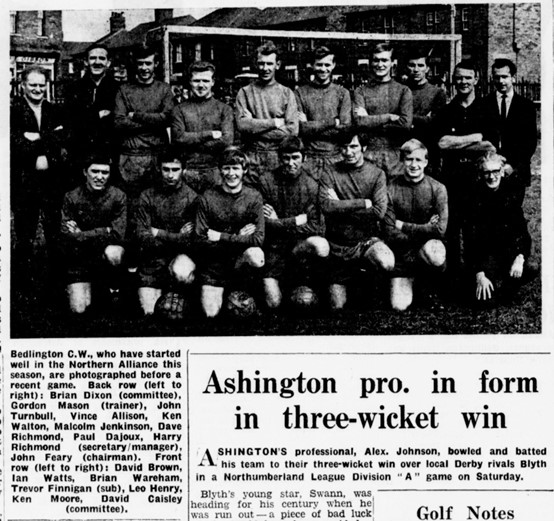
(Morpeth Herald, 22 August 1969)
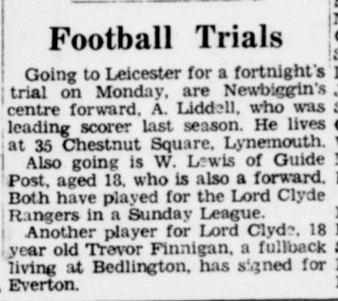
His football journey began with his home town club Bedlington CW FC, followed by a stint with Lord Clyde Rangers. While at Rangers and now aged eighteen, he was offered a trial at Everton, and signed for the Toffees in July 1971, where he operated primarily as a right-back in the reserves. Although he never made a first-team appearance, he rubbed shoulders with seasoned professionals like Howard Kendall, and promising youngsters like Mick Lyons, Ronny Goodlass and Roger Kenyon, helping form the bedrock of his tactical understanding and competitive spirit.

Trevor Finnigan is on the back row centre, fifth from the left, next to Mick Lyons
– a row that also features future regulars David Johnson and Gary Jones (far left)

Everton v Newcastle United, match day programme, 30 October 1971
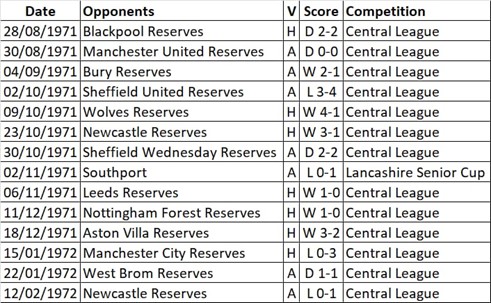
Trevor made 14 appearences for the reserves with 13 in the Central League and one in Lancashire Senior Cup, scoring in the 4-1 win over Wolves Reserves.
(Stats courtesy of EFCHS member Bradley Cates at www.efcstatto.com )
Non – League career
After Everton, Finnigan’s career, now in non-league football, saw him sign for New Brighton. It was here that he redefined himself, not as a defender, but as a lethal striker. Over two seasons, he banged in over 50 goals, and soon came to the eye of Runcorn manager Stan Storton.
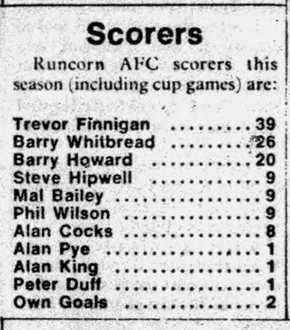
Runcorn Guardian, 23 April 1976
On moving to Runcorn, Finnigan’s impact was immediate and electric. On his Northern Premier League (NPL) debut, he scored a hat-trick against rivals Altrincham, instantly becoming a fan favourite. During the 1975–76 season, his goals were pivotal in securing Runcorn’s first-ever NPL title. Though his partner Barry Whitbread scored the title-clinching goal, Finnigan ended the campaign with a staggering 34 goals.
One of his most memorable strikes came in the FA Trophy quarter-final, where he lashed home a long-range screamer against Bedford Town. His Runcorn spell cemented his legendary status and showcased a deadly eye for goal and relentless drive.
Finnigan’s red-hot form earned him a move into league football with Blackpool in 1977. Unfortunately, the magic didn’t quite translate to the Football League. He made just thirteen starts, with four substitute appearances, and found himself frustrated by a lack of opportunities.
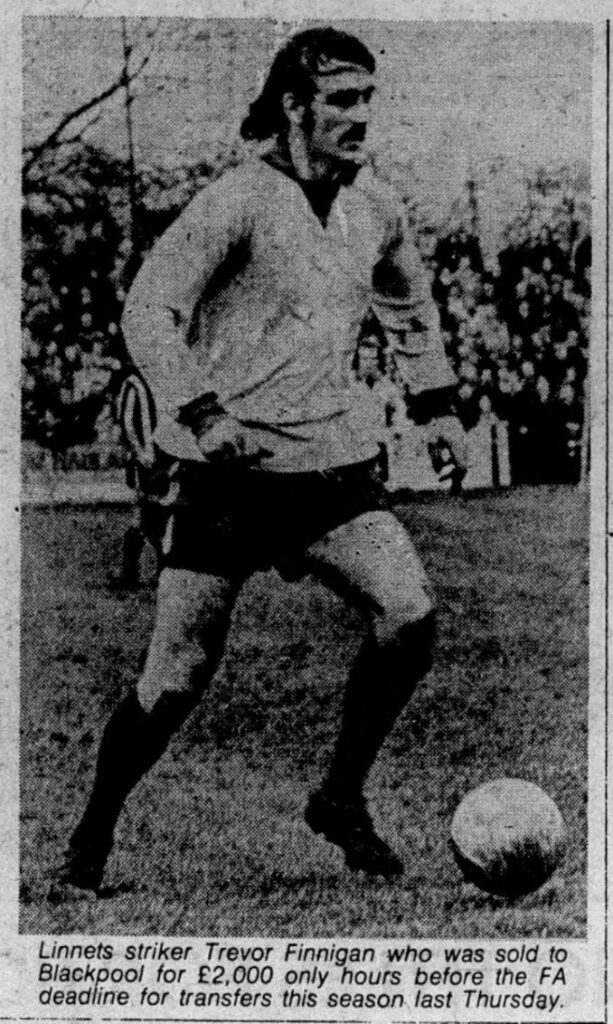
Runcorn Guardian, 18 March 1977
Seeking better fortunes, he was transferred to Bournemouth in January 1978. His time there was more productive, five goals in 25 appearances, but it was clear that Finnigan’s true kingdom was the world of non-league football, where passion and grit mattered more than pedigree.
Returning to non-league, he enjoyed two productive spells with Yeovil Town, including time as player-manager, making 125 appearances over three seasons with a goal return of twenty-nine, and also had a memorable stint at Weymouth, where he scored 25 goals in 97 appearances. It was with Weymouth that Finnigan experienced arguably the most iconic moment of his career in the slaying of the Cardiff City in the FA Cup.
In November 1982, Weymouth faced Cardiff City, a full forty league places above them, in the FA Cup second round. On paper, it was a mismatch. On the pitch it was war.
Cardiff raced to a 2–0 lead, and things looked bleak for The Terras. But then came the fightback. First, Anni Iannone headed in to make it 2–1. Then, a defensive lapse allowed Iannone to set up Finnigan, who tapped home to level the match. Finally, a late goal from Gerry Pearson sealed a 3–2 victory in the Welsh mud. It was a seismic cup shock and Trevor Finnigan was right at the heart of it.
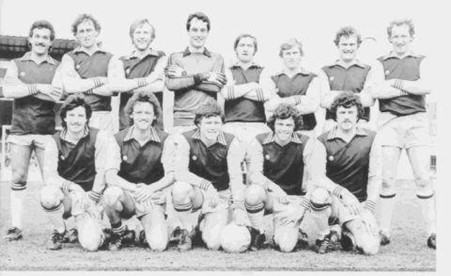
Trevor Finnigan – back row, second from the left – Dorset Echo
That same cup run offered another moment that would become part of Finnigan folklore. In the earlier round against Maidstone United, Weymouth had fallen 3–1 behind. Finnigan, having left the field injured, suddenly appeared on the sidelines wearing nothing but a towel, barking encouragement at his teammates on a freezing November afternoon.
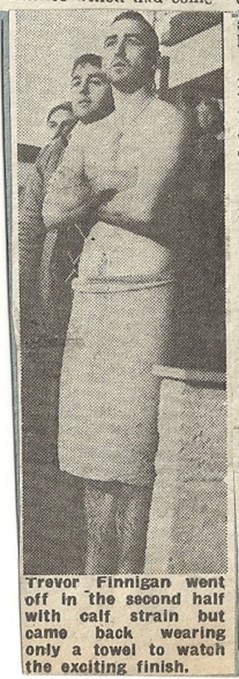
That day, Weymouth fought back to win 4–3, and the image of Finnigan, half-naked but full of fire, remains etched in fans’ memories. It was bizarre, bold, and beautifully in character, a perfect snapshot of the man himself.
In 1981, Finnigan’s consistent performances earned him a rare honour: two caps for England’s semi-professional team. The matches, held in Italy against Holland and Scotland, saw England win one and draw the other. Representing his country was no small feat and reflected the high regard in which he was held.
These appearances put him alongside top non-league contemporaries like Barry Whitbread and Barry Howard and confirmed that while he may have left the professional leagues behind, his quality had not gone unnoticed.
After hanging up his boots, Trevor Finnigan transitioned into a career in the fibre optics industry, and moved to Germany, where he still lives. Though far removed from the roar of the terraces, he remains fondly remembered in the towns and clubs he served with such passion.
Trevor Finnigan’s story is more than a personal success tale; it’s a celebration of what football means at every level, not just the Premier League glitz, but the soul of the sport found on muddy pitches, behind pubs, and in the hearts of communities.
He was never a superstar in the traditional sense. He didn’t lift the FA Cup at Wembley or sign multimillion-pound contracts. But in places like Runcorn, Yeovil, and Weymouth, he was the star, a man whose goals, grit, and wild, towel-wrapped antics captured imaginations and turned matches into memories.
His adaptability from right-back to striker, player to manager mirrored the journey of many non-league warriors, grinding out careers through resilience and reinvention. He showed that there’s more than one path to footballing greatness, and sometimes the most memorable ones are found off the beaten track.
Finnigan’s story is especially powerful for young footballers navigating the uncertainty of a sport where dreams can dissolve quickly. From a player who didn’t make it at Everton, to someone who reinvented himself as a non-league icon, he’s a testament to the virtues of adaptability, passion, and persistence.
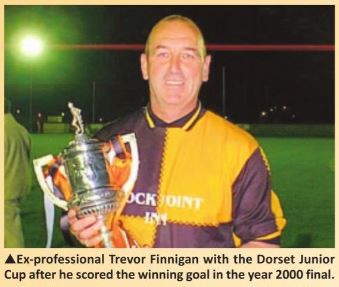
Whether playing in front of thousands at Runcorn, battling giants with Weymouth, or urging teammates on in just a towel, Trevor Finnigan embodied the spirit of football. Not the business. Not the branding. But the pure, unfiltered game: fierce, unpredictable, and full of heart.
As the years pass, legends often fade. But Trevor Finnigan’s legacy lives on, not just in match reports or old programmes, but in the memories of those who saw him play, fought with him on the pitch, or shared a pint with him after a match.
In the yellow and green of Runcorn, the claret and blue of Weymouth, and the green and white of Yeovil, Finnigan remains a symbol of what football can be when played with joy, fire, and a touch of madness.
He may not have worn the Three Lions on Wembley turf, but to countless fans and teammates across England, Trevor Finnigan will always be a lionheart.
.
Acknowledgments and Sources
Match day programme; Everton v Newcastle United, 30 October 1971
Exiled in Stats – A TerraStatman blog, The day Weymouth “Town” slew the Cardiff dragons…40 years on… December 9, 2022
EFC Statto – Bradley Cates for Trevor Finnigan Reserve team career Information.
Lyme Regis 125 commemorative Brochure
Runcorn Guardian
Yeovil Legends
Daily Mirror

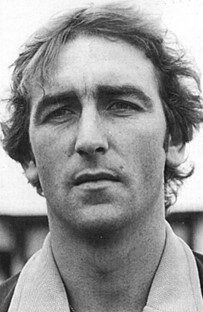
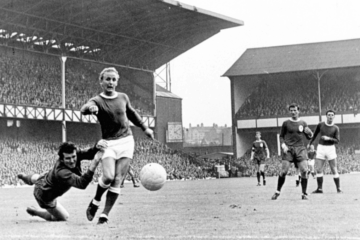

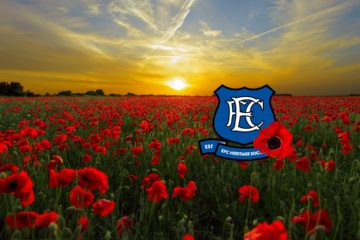
Great article never heard of him “life long BLUE” but a true warrier. A total credit to none league football, it’s so easy to throw your hand in when obvious at a young age “you’re not going to make the top flight”. That’s what proper football is all about “summed by reappearing when subbed due to injury” wrapped in a towel on a freezing cold day. Sounded like a archyltype forward full of running on pitches worse than Derby Counties
I’m a former colleague of Richie on the Everton Fan Advisory Board. I was employed by Associated Octel, Ellesmere Port for 30 years from 1970 and remember Trevor from the short time he worked on our Sodium Plant in, I guess, 1970 or 1971 and I played against him in an inter departmental football match. Apart from his obvious class he had the hardest shot I’ve ever experienced. I was defending on the goal line at a free kick which he took and luckily I never saw it but it hit the cross bar above my head and rebounded almost to the half way line. Needless to say I closely followed his career with Runcorn afterwards.